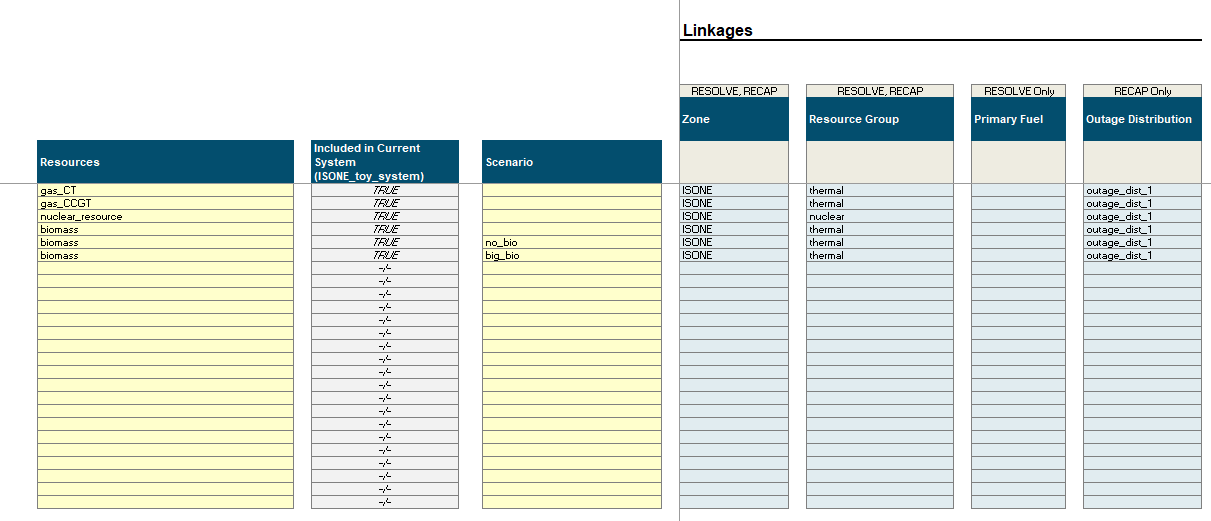Linkages
Linkages serve two purposes:
To connect two
ComponentstogetherTo store data related to the linked components (e.g., the
ZoneToTransmissionPathlinkage holds information about which zone is thefrom_zoneand which is theto_zone)
Hint
For folks familiar with databases, you can think of linkages as “foreign keys”.
Linkages are defined within each of the component tabs in the UI. They are specified individually for each component and is defined in the first few columns of each component. Below is an example of where linkages are in the UI
Example of select ThermalResource linkages in the Thermal Tab in the UI.

Linkage CSV File Format
Linkage input CSVs follow a slightly modified version of the attributes.csv file format discussed on the
Components page. In particular, individual “instances” of linkages are not separated into separate
CSV files but are instead grouped together under the same CSV file under the corresponding data/system
subfolder. As such, individual linkages are identified via additional columns in the CSV file:
component_from |
component_to |
timestamp |
attribute |
value |
scenario tag (optional) |
|---|---|---|---|---|---|
[component instance name] |
[component instance name] |
[None or timestamp (hour beginning)] |
[attribute name defined in code] |
[value] |
[scenario name] |
Otherwise, timeseries data, units, and scenario tagging behave the same way as Component attributes.csv files.
Special Cases
Threeway Relationships
PRM → Resource → ELCC
Three-way relationships (e.g., PRM → Resource → ELCC) must be defined as multiple linkages (e.g., PRM → Resource, Resource → ELCC, ELCC → PRM) to capture all the requisite information.